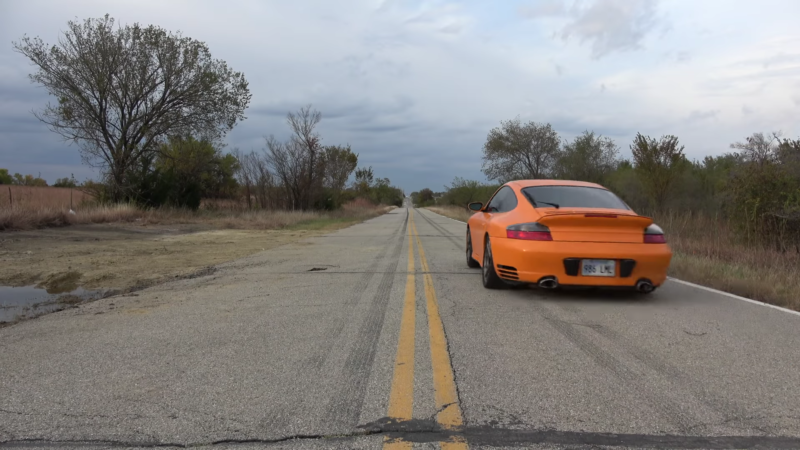No creaks, no rattles, no sagging headliner, and no cracked leather. Even the interior lighting shines bright—don’t expect that from BMWs of the era. There aren’t many indications that this gaudy orange 996 Turbo has been rolling around this planet for the better part of two decades. It’s a resilient car to say the least, though somehow it’s still not widely appreciated by the Porsche purists. Tyler “Hoovie” Hoover explains how the 996 Turbo still brings a lot to the table.

Though it’s not hugely powerful by today’s standards, the way the 996 Turbo covers ground is impressive.
Cheaper than the 997 and more analog than the 991, the 996 Turbo is a straightforward, cost-effective, everyday supercar that plays the part well. The fact that it doesn’t look much different than a standard 911 won’t turn too many heads in reasonably affluent areas. In New York, Los Angeles, or San Francisco, the 996 Turbo is a relatively subdued car that doesn’t attract a lot of attention. It’s pleasant enough for long hauls, and the factory exhaust—muted slightly by the turbochargers—keeps the volume down to a respectable level.
Strong, sensible, and sanely priced, there’s plenty this unappreciated gem offers—but it does have its faults. Hoovie had one embarrassing outing at Heartland Motorsports Park when one of the flimsy cooling pipes decided to let go in dramatic fashion. Though he spilled coolant across the circuit, the damage was minimal. This common issue still set him back a few thousand, but with BBi Autosport stepping in with a more robust replacement, he resolved one of the car’s few weak points.
The other problems with the car are more subjective. If you can get past the broken-egg headlights and the blasphemous water cooling, the 996 Turbo is a sophisticated supercar with great value for the money. That assortment of strengths with few setbacks—for just ~$40,000—has me thinking it’s time to add another “practical” car to the stable.
